Tour de Kyoto! Day 1
KANSAI INTERNATIONAL AIRPORT
関西国際空港
Osaka Bay, Osaka, Japan
Kenshin: Before we start our journey, let me explain a bit about Kyoto. Kyoto (京都) is a city in the central part of the island of Honshū, Japan. It has a population close to 1.5 million. Formerly the imperial capital of Japan (until 1868), it is now the capital of Kyoto Prefecture, as well as a major part of the Osaka-Kobe-Kyoto metropolitan area. Kyoto, located in the valley, is surrounded by Sea of Japan, Shiga Prefecture, Osaka Prefecture, Fukui Prefecture, Hyogo Prefecture, and Nara prefecture...
Kaoru: Kyoto is famous for its heritage sites like 1600 Budhist temples, 400 Shinto shrines, also another palaces, gardens, and architecture intact. The historic monuments of ancient Kyoto is included as one of Japan World Heritage declared by UNESCO in 1992...
Tna: Subarashii! So there are so many Japanese culture sites here... I can't wait to travel them one by one!
Kenshin: Since Kyoto only consisted of 11 wards, we may possible to visit them all...
Kaoru: We'll do the travel tomorrow, you two can have a rest for today... maybe Shimogokyu Hotel suits you both. Let's go~!
Kenshin: Oh but before that, let me show them the Kyoto map. Kore douzo...
Saturday, June 25
Kyoto Tower
Shimogyo Ward, Kyoto, Kyoto Prefecture
Japan
Kaoru: Since we're still in Shimogyo, let's take a look at the most famous landmark in Shimogyo... there it is, Kyoto Tower!
Kenshin: The steel tower is the tallest structure in Kyoto with its observation deck at 100 meters (328 ft) and its spire at 131 meters (430 ft).[2] The 800-ton tower stands atop a 9-story building, which houses a 3-star hotel and several stores...
Kaoko: Its design is completely different with the red Tokyo Tower we've ever seen...
Kenshin: Of course, because Tokyo Tower is inspired by the Eiffel Tower of Paris...
Kaoru: Kyoto Tower is split into two distinct structures. The primary structure is the steel spire that begins on the roof of the building below. Tourists may buy tickets and ascend one of the tower's nine elevators to visit the 100-metre (330 ft)-high, 500-person-capacity observation deck. This area is lined with game machines and pay telescopes and provides a 360-degree view of the city. From here, nearly all of Kyoto can be seen...
Sanosuke: The second structure that completely supports the 800-ton tower and gives the it its first 30.8 meters of height is a 9-story building. The first four floors of the building house several commercial areas, including a souvenir shop, a 100 yen shop, a bookstore and a dentist's office. In the basement of the building, there is a spa. Floors 5-9 are devoted to the 160-room, 3-star Kyoto Tower Hotel. Atop the building and surrounding the tower is the circular, three-floor restaurant named Sky Lounge "空"...
Tna: Omoshiroi (interesting)! May us go to the observation deck?
Yahiko: Mochiron! Iku ze!
Kaoru: From the observation deck, we can see the mountains of Higashiyama and Arashiyama on the east and west sides respectively, while Kitayama can be seen to the north. On a clear day, some buildings in Osaka are visible to the south!
Kyoto International Manga Museum
Nakagyou Ward, Kyoto, Kyoto Prefecture
Japan
Yahiko: Nah, we currently in the famous Kyoto International Manga Museum!
Tna: Wow, it really exists! As expected from the home of manga...
Kaoko: If only I lived here... I could read many different manga everyday...
Kenshin: Yeah, right. The museum which was opened on November 25, 2006, has collection of 200,000 items includes such rarities as Meiji period magazines and postwar rental books. Actually, it is the former Tatsuike Elementary School...
Sanosuke: C'mon, let's enter the building!
Nijō Castle
Nakagyou Ward, Kyoto, Kyoto Prefecture
Japan
Kaoru: We're still in Nakagyou ward, in front of the Nijō Castle, one of the Historic Monuments of Ancient Kyoto!
Kenshin: It is a flatland castle consisting of two concentric rings of fortifications, the Ninomaru Palace, the ruins of the Honmaru Palace, various support buildings and several gardens. The surface area of the castle is 275,000 square meters, of which 8000 square meters is occupied by buildings...
Kaoru: The decoration of Ninomaru Palace includes lavish quantities of gold leaf and elaborate wood carvings, intended to impress visitors with the power and wealth of the shoguns. The sliding doors and walls of each room are decorated with wall paintings by artists of the Kanō school...
Sanosuke: While Honmaru Palace has a surface area of 1600 square meters. The complex has four parts: living quarters, reception and entertainment rooms, entrance halls and kitchen area...
Kaoru: There is also Ninomaru Garden!
Tna, Kaoko: Kireeeei~!
Kenshin: More about Nakagyou Ward, three most famous festivals of Kyoto, the Aoi Matsuri, the Gion Matsuri, and the Jidai Matsuri can be seen here...
関西国際空港
Osaka Bay, Osaka, Japan
Tna: Sugoooooi (Awesome)~! This is the first time for me seeing the airport in the middle of the sea!
Kaoko: Yeah, Kansai International Airport also known as Sinking Airport. What's surprising us more, it's actually built in a man-made island!
Tna: Maji ka yo (Seriously)? Sasuga Nippon datta (As expected from Japan)...
Kaoko: Ah, tonikaku Tna-chan, who is supposed to pick us up here? It should be someone who has the name begins with 'RU' deshou ne?
Kenshin, Kaoru, Sanosuke, Yahiko: Konnichiwa, Nihon e youkoso! *bows*
Tna: Konnichiwa, anatatachi-san~! *bows*
Kaoko: Chotto, chotto, Tna-chan. Himura Kenshin-san... Kamiya Kaoru-san... Sagara Sanosuke-san... Myoojin Yahiko-kun... which one of them begins with 'RU'? *whispers*
Tna: Sore wa... gomen, Kaoko-chan. It's kinda hard finding characters begun with RU, so I invited 'Rurouni Kenshin' family as our character of the lesson... ii n desu ka?
Kaoko: Naruhodo... maa ikka. Konnichiwa, Kenshin-san, Kaoru-san, Sanosuke-san, and Yahiko-kun... *bows*
Tna: Thank you very much for helping us this time...
Kaoru: Iie, watachitachi wa ureshikatta wa yo... come on, let's go to Kyoto and find some lodgings in Shimogyo Ward...
Kenshin: Warukatta na, our dojo is being repaired so you can't stay there...
Tna: Daijoubu (It's okay), Kenshin-san...
Yahiko: Doko?
Tna: Nani ga?
Yahiko: O-mi-ya-ge
Tna: Ah! Suimasen... hontou ni wasureteta (I completely forgot)...
Yahiko: Sasuga Tna-obasama... itai (it hurts)! 

Tna: You deserve that, Young Boy, for calling me the old lady...
All: *laughs*
Kaoko: Anou... I think we miss someone here...
Kaoru: Ah, you meant Megumi-san? She is busy nursing the patients, her greetings for you both, Tna-san and Kaoko-san...
Sanosuke: That old lady is likely meeting with some good looking patients that make her can't even leave the clinic...
Kaoru: Oho! Jealousy detected!
Yahiko: HAHAHAHA... itai! *Sanosuke punches him*
Sanosuke: Ahou! You deserve that, Young Boy, for teasing me!
Kenshin: Maa, maa... mou yameyo (please stop it)... let's buy the ticket and head to Kyoto! The train will depart in thirty minutes...
Sanosuke: Iku zo!
Kansai Airport Limited Express Haruka Train
Destination: Kansai Airport - Maibara Station (Shiga Prefecture)
Tna: Another luxurious train from Japan!
Kaoko: Sugoi!
Kaoru: Actually There are two train options to travel to Kyoto from Kankū (Kansai Airport in Japanese), they are this JR Haruka that offers the fast service but more expensive and JR Rapid Service that offers the cheaper ticket but take longer time...
Kaoko: It's weird... why 'Rapid Service' is slower instead? It should be faster, isn't?
Kenshin: Haha... only the owner of JR Rapid Service knows...
KYOTO STATION (京都駅)
Shimogyo Ward, Kyoto City, Kyoto Prefecture
Japan
Kaoru: Nah, welcome to Kyoto!
Kenshin: Before we start our journey, let me explain a bit about Kyoto. Kyoto (京都) is a city in the central part of the island of Honshū, Japan. It has a population close to 1.5 million. Formerly the imperial capital of Japan (until 1868), it is now the capital of Kyoto Prefecture, as well as a major part of the Osaka-Kobe-Kyoto metropolitan area. Kyoto, located in the valley, is surrounded by Sea of Japan, Shiga Prefecture, Osaka Prefecture, Fukui Prefecture, Hyogo Prefecture, and Nara prefecture...
Kaoru: Kyoto is famous for its heritage sites like 1600 Budhist temples, 400 Shinto shrines, also another palaces, gardens, and architecture intact. The historic monuments of ancient Kyoto is included as one of Japan World Heritage declared by UNESCO in 1992...
Tna: Subarashii! So there are so many Japanese culture sites here... I can't wait to travel them one by one!
Kenshin: Since Kyoto only consisted of 11 wards, we may possible to visit them all...
Kaoru: We'll do the travel tomorrow, you two can have a rest for today... maybe Shimogokyu Hotel suits you both. Let's go~!
Kenshin: Oh but before that, let me show them the Kyoto map. Kore douzo...
Saturday, June 25
Kyoto Tower
Shimogyo Ward, Kyoto, Kyoto Prefecture
Japan
Kaoru: Since we're still in Shimogyo, let's take a look at the most famous landmark in Shimogyo... there it is, Kyoto Tower!
Kenshin: The steel tower is the tallest structure in Kyoto with its observation deck at 100 meters (328 ft) and its spire at 131 meters (430 ft).[2] The 800-ton tower stands atop a 9-story building, which houses a 3-star hotel and several stores...
Kaoko: Its design is completely different with the red Tokyo Tower we've ever seen...
Kenshin: Of course, because Tokyo Tower is inspired by the Eiffel Tower of Paris...
Kaoru: Kyoto Tower is split into two distinct structures. The primary structure is the steel spire that begins on the roof of the building below. Tourists may buy tickets and ascend one of the tower's nine elevators to visit the 100-metre (330 ft)-high, 500-person-capacity observation deck. This area is lined with game machines and pay telescopes and provides a 360-degree view of the city. From here, nearly all of Kyoto can be seen...
Sanosuke: The second structure that completely supports the 800-ton tower and gives the it its first 30.8 meters of height is a 9-story building. The first four floors of the building house several commercial areas, including a souvenir shop, a 100 yen shop, a bookstore and a dentist's office. In the basement of the building, there is a spa. Floors 5-9 are devoted to the 160-room, 3-star Kyoto Tower Hotel. Atop the building and surrounding the tower is the circular, three-floor restaurant named Sky Lounge "空"...
Tna: Omoshiroi (interesting)! May us go to the observation deck?
Yahiko: Mochiron! Iku ze!
Kaoru: From the observation deck, we can see the mountains of Higashiyama and Arashiyama on the east and west sides respectively, while Kitayama can be seen to the north. On a clear day, some buildings in Osaka are visible to the south!
Kyoto International Manga Museum
Nakagyou Ward, Kyoto, Kyoto Prefecture
Japan
Yahiko: Nah, we currently in the famous Kyoto International Manga Museum!
Tna: Wow, it really exists! As expected from the home of manga...
Kaoko: If only I lived here... I could read many different manga everyday...
Kenshin: Yeah, right. The museum which was opened on November 25, 2006, has collection of 200,000 items includes such rarities as Meiji period magazines and postwar rental books. Actually, it is the former Tatsuike Elementary School...
Sanosuke: C'mon, let's enter the building!
Nijō Castle
Nakagyou Ward, Kyoto, Kyoto Prefecture
Japan
Kaoru: We're still in Nakagyou ward, in front of the Nijō Castle, one of the Historic Monuments of Ancient Kyoto!
Kenshin: It is a flatland castle consisting of two concentric rings of fortifications, the Ninomaru Palace, the ruins of the Honmaru Palace, various support buildings and several gardens. The surface area of the castle is 275,000 square meters, of which 8000 square meters is occupied by buildings...
Kaoru: The decoration of Ninomaru Palace includes lavish quantities of gold leaf and elaborate wood carvings, intended to impress visitors with the power and wealth of the shoguns. The sliding doors and walls of each room are decorated with wall paintings by artists of the Kanō school...
Sanosuke: While Honmaru Palace has a surface area of 1600 square meters. The complex has four parts: living quarters, reception and entertainment rooms, entrance halls and kitchen area...
Kaoru: There is also Ninomaru Garden!
Tna, Kaoko: Kireeeei~!
Kenshin: More about Nakagyou Ward, three most famous festivals of Kyoto, the Aoi Matsuri, the Gion Matsuri, and the Jidai Matsuri can be seen here...
Aoi Matsuri
Gion Matsuri
Jidai Matsuri
Kamigyou Ward, Kyoto, Kyoto Prefecture
Japan
Sanosuke: We're now at the north side from Nakagyou-ku, which is Kamigyou-ku (ku (区)= ward)!
Kaoru: Two Shinto shrine in this ward are Kitano Tenman-gū and Seimei Shrine...
Kitano Tenman-gū
Seimei Shrine
Kenshin: Kitano Tenman-gū, built in 942, is popular with students praying for success in exams because the deity was in his life a man of literature and knowledge. On the 25th of every month, the shrine hosts a flea market...
Tna, Kaoko: Oh soukka...
Kaoru: At the Seimei Shrine, there is a famous well with pentagram motif located on the shrine grounds.The water drawn from it is considered somewhat magical. Tea master Sen no Rikyū was known to have brewed tea with the water from this well...
Kyoto Imperial Palace
Kamigyou Ward, Kyoto City
Kyoto Prefecture, Japan
Sanosuke: It's Kyoto Imperial Palace! An imperial palace in Japan even the Emperor is not in residence. The Emperor has resided at the Tokyo Imperial Palace since 1869...
Kaoru: The palace is situated in the Kyōto Gyoen (京都御苑), a rectangular enclosure 1.3 km north to south and 0.7 km east to west which also contains the Sento Imperial Palace gardens, a large garden of 22 acres or 89,000 meters square...
Kyoto Imperial Palace figure in traditional clothing
Kyoto Imperial Palace Garden
Sento Imperial Palace
Yahiko: Let's across the Kamo River and go to Sakyo-ku!
Sakyō Ward, Kyoto, Kyoto Prefecture
Japan
Kenshin: Some famous temple you have to visit in Sakyō-ku are Ginkaku-ji, Nanzen-ji, Kamo Shrine, and Heian Shrine...
Kaoru: Ginkaku-ji or Ginkaku Temple (Temple of the Silver Pavilion) is a Zen temple that represents the Higashiyama Culture of Muromachi period...
Ginkaku-ji
Yahiko: This temple was originally built to serve as a place of rest and solitude for the Shogun...
Sanosuke: Nazen-ji is a Zen Buddhist temple. Emperor Kameyama established it in 1291 on the site of his previous detached palace. It is also the headquarters of the Nanzen-ji branch of Rinzai Zen...
Nanzen-ji
Yahiko: Nanzen-ji had the title of "First Temple of The Land" and played a supervising role.
Kaoru: Now we are in the front of Kamo Shrine!
Kenshin: Kamo Shrine (賀茂神社) is a general term for an important Shinto sanctuary complex on both banks of the Kamo River. It is centered on two shrines. The two shrines, an upper and a lower, lie in a corner of the old capital which was known as the "devil's gate" (鬼門 kimon) due to traditional geomancy beliefs that the north-east corner brought misfortune. Because the Kamo River runs from the north-east direction into the city, the two shrines along the river were intended to prevent demons from entering the city...
Kaoru: The upper shrine is called Kamigamo Shrine while the lower one is called Shimogamo Shrine...
Kamigamo Shrine
Shimogamo Shrine
Sanosuke: Here we are at Heian Shrine!
Kaoru: It's a Shinto Shrine, built in 1895 for the 1,100th anniversary of the establishment of Heiankyō (the old name of Kyoto). The torii before the main gate is one of the largest in Japan, and the main building, or shaden (社殿), is designed to imitate the Kyoto Imperial Palace on a three-fourth scale...
Heian Shrine
Yahiko: As for the educational institution, there are three main campus located here such Kyoto University, Kyoto Institute of Technology and Kyoto Seika University...
Kyoto University
Kyoto Institute of Technology
Kyoto Seika University
Kyoto International Conference Center
Sakyō Ward, Kyoto City
Kyoto Prefecture, Japan
Kaoru: Welcome to the Kyoto International Conference Center!
Kenshin: Kyoto International Conference Center, abbreviated as ICC Kyoto and previously called the Kyoto International Conference Hall, is a large conference facility located at Takaragaike, Sakyō-ku, Kyoto. The Kyoto Protocol was signed in this hall...
Sanosuke: Opened in 1966 and with addition in 1973, ICC Kyoto today has the total facility provides 156,000 m² of meeting space, and consists of the main Conference Hall with large meeting room (capacity 2,000) and a number of smaller rooms, an Annex Hall (capacity 1,500) and Event Hall, with the Grand Prince Hotel Kyoto nearby. Both Main Hall and Annex Hall are equipped with simultaneous interpreting facilities for nine languages...
Annex Hall Interior of ICC Kyoto
Kyoto Botanical Garden
Sakyō Ward, Kyoto City
Kyoto Prefecture, Japan
Kaoru: Aloha! We're at Kyoto Botanical Garden now! It is a major botanical garden with conservatory located next to the Kamo River. Open daily; of course an admission fee is charged~!
Kenshin: The garden was first established in 1924, fell into disuse in 1946, and was restarted in 1961. As of 2007, it contains about 120,000 plants representing some 12,000 species, and is organized into the following major areas: Bamboo Garden; Bonsai Exhibit; Camellia Garden;Cherry Trees; European Style Garden; Flower Bed; Hydrangea Garden; Japanese Iris Garden; Japanese Native Plants; Lotus Pond; Nakaragi-no-mori Pond (trees native to the Yamashiro Basin); Peony Garden; Perennial and Useful Plants Garden; Sunken Garden; and the Uma Grove...
Tna: Kireeeeeei~! Totemo kirei! Subarashii!
Kaoko: Yeah~ it's magnificent!
Kaoru: Beautiful, isn't? The garden also contains a very substantial conservatory complex (4,612 m²) containing about 25,000 specimens representing 4,500 species..
Conservatory
Conservatory (Interior View)
Water Mill
Sanosuke: Oh... it's evening already. I think we should rest somewhere...
Tna: Is there any hotel in vicinity?
Kaoru: Yeah, there is! We're going to stay overnight at nearby hotel. Ikimashou~!
Sunday, June 26
Kinkaku-ji
Kita Ward, Kyoto, Kyoto Prefecture
Japan
Kaoru: Our first destination today is Kinkaku-ji (金閣寺 Temple of the Golden Pavilion )! It's also known as Rokuon-ji (鹿苑寺 Deer Garden Temple), is a Zen Buddhist temple and also one of most popular buildings in Japan!
Kenshin: The Golden Pavilion (金閣 kinkaku) is a three-story building on the grounds of the Rokuon-ji temple complex. The top two stories of the pavilion are covered with pure gold leaf...
Tna: Seriously?
Kaoko: Subarashii (splendid)!
Kenshin: Yeah, indeed! Each floor of the Kinkaku uses a different architectural style. The first floor, called The Chamber of Dharma Waters, is rendered in shinden-zukuri style, reminiscent of the residential style of the 11th century Heian imperial aristocracy. The second floor, called The Tower of Sound Waves, is built in the style of warrior aristocrats, or buke-zukuri. The third floor is built in traditional Chinese cha'an style, also known aszenshu-butsuden-zukuri. The building is topped with a bronze phoenix ornament...
Kaoko: Even though I'm sort of unclear to what you said, but I'm sure it's really an incredible building!
Kenshin: Haha yeah... what I said before is tightly related to history...
Yahiko: One thing you have to know, this pavilion extends over a pond, called Kyōko-chi (鏡湖池 Mirror Pond), that reflects the building...
Daitoku-ji
Kita Ward, Kyoto City
Kyoto Prefecture, Japan
Sanosuke: Yo! It's Daitoku-ji turn now!
Kaoru: It is a Buddhist temple, one of fourteen autonomous branches of the Rinzai school of Japanese Zen...
Kenshin: Founded in 1315 or 1319 by the monk Shūhō Myōchō, Daitoku-ji became particularly important from the sixteenth century. Around this current period in history, it became closely linked to the master of the Japanese Tea Ceremony , Sen no Rikyū, and consequently to the realm of the Japanese tea ceremony...
Ninna-ji and Ryoan-ji
Ukyō Ward, Kyoto, Kyoto Prefecture
Japan
Kaoru: Welcome to Ninna-ji! It is the head temple of the Omuro school of the Shingon Sect of Buddhism! It was founded in early Heian period...
Kenshin: Adjacent to Ninna-ji, there is Ryoan-ji, a Zen temple which is also one of Historic Monuments of Ancient Kyoto...
Kenshin: An object of interest near the rear of the monks quarters is the carved stone receptacle into which water for ritual purification continuously flows is the Ryōan-ji tsukubai (蹲踞). The Buddhist purified themselves by washing hands and rinsing the mouths...
Tsukubai
Kozan-ji
Ukyō Ward, Kyoto, Kyoto Prefecture
Japan
Kaoru: Nah, this is Kozan-ji, an an Omuro Buddhist temple located in Ume-ga-hata Toganoo-chō, Ukyō Ward...
Kenshin: Originally, this temple was consisted of a large gate, a main hall, a three-storied pagoda, a hall dedicated to Amitabha, a hall dedicated to Lohan, a bell tower, a scripture hall, and a Shinto shrine dedicated to the tutelary deity of the area. However, all of these buildings have since been destroyed, save for the scripture hall, which is now known as Sekisui-in...
Sekisui-in
Golden Hall
The Path to Golden Hall
Tenryu-ji
Ukyō Ward, Kyoto, Kyoto Prefecture
Japan
Yahiko: Still in temple thing, we currently at Tenryu-ji!
Sanosuke: Tenryu-ji is the head temple of the Tenryū branch of Rinzai Zen Buddhism, located in Susukinobaba-chō, Ukyō Ward. Founded by Ashikaga Takauji in 1339, the temple grounds grew to roughly 330,000 square meters in size...
Kaoru: Oh I forgot to tell you... there is a marvelous park behind this temple! Nah, it's called Kameyama Koen!
Tna: I barely can say a word... speechless... it's really really beautiful!
Arashiyama Hill
Ukyō Ward, Kyoto, Kyoto Prefecture
Japan
Kaoru: Finally we can enjoy the beautiful scenery of Arashiyama Hill! Some interesting tourist sites are here, like Iwatayama Monkey Park, Moon Crossing Bridge (渡月橋,Togetsukyō), Tenryu-ji and Kameyama Koen which we've just visited, The hamlet of Kiyotaki, Matsuo Shrine, and Ōkōchi Sansō...
Sanosuke: Iwatayama Monkey Park inhibited with over 170 Japanese macaque monkeys. Once we buy the entrance ticket, we're facing a steep climb up the montain... iko zo, let's climb the mountain!
Yahiko: Before entering the park, we'd better buy drinks for ourselves and foods to fed up the monkeys. The choice of food for the monkeys ranges from bags of apple and banana slices, bags of biscuits, and bags of chestnuts and peanuts. As of April 2011, bags of food are sold for JPY 100...
Baby Monkey
Macaca fuscata
Kaoru: Oh and be careful when feeding the monkey. They may scare some children!
Kaoru: Nah this is Moon Crossing Bridge (渡月橋,Togetsukyō). It's actually a very good place to see sakura and autumn colors on the slopes of Mt Arashiyama...
Moon Crossing Bridge
Sanosuke: The rest is the hamlet of Kiyotaki, Matsuo Shrine, and Ōkōchi Sansō...
Matsuo Shrine
Tea Garden of Ōkōchi Sansō
Matsunoo Grand Shrine
Nishikyō Ward, Kyoto, Kyoto Prefecture
Japan
Yahiko: Across from Katsura River separating Ukyō-ku and Nishikyou-ku, we finally get into Matsuuno-taisha (Matsuuno Grand Shrine)! It's approximately 1,3 km from Arashiyama district...
Kaoru: It is home to a spring at the base of the mountain, Arashiyama, that is believed to be blessed...
Sanosuke: The shrine also serves a kinpaku (gold leaf filled) miki (or blessed sake) during hatsumode...
Hatsumode
Saiho-ji
Nishikyō Ward, Kyoto, Kyoto Prefecture
Japan
Kaoru: We're now at Saiho-ji, a Rinzai Zen Buddhist temple which is famed for its moss garden, is commonly referred to as "Koke-dera" (苔寺)...
Katsura Imperial Villa
Nishikyō Ward, Kyoto, Kyoto Prefecture
Japan
Tna: How tired... where are we now?
Kenshin: We are at Katsura Imperial Villa, a villa with associated gardens and outbuildings in the western suburbs of Kyoto. It is one of Japan's most important large-scale cultural treasures...
Kaoru: The palace includes a shoin ("drawing room"), tea houses, and a strolling garden...
Tō-ji
Minami Ward, Kyoto, Kyoto Prefecture
Japan
Kaoru: This is our last destination for today which is Tō-ji...
Kenshin: Tō-ji (東寺 Tō-ji) is a Buddhist temple of the Shingon sect, founded in early of Heian Period. The pagoda of Tō-ji stands 54.8 m high, and is the tallest wooden tower in Japan, it continues to be a symbol of Kyoto...
Sanosuke: Let's have a rest, we'll continue the journey tomorrow! We're going to search the vicinity inn!
Tour de Kyoto! Day 3
It's a part 3 of Tour de Kyoto with Rurouni Kenshin family! Enjoy ^_^
Monday, June 27
Credits: Wikipedia, Kyoto Travel Guide, All unmentioned picture sources
Monday, June 27
Fushimi Inari Taisha
Fushimi Ward, Kyoto, Kyoto Prefecture
Japan
Kaoru: Ohayou~! Already having a new spirit? I wish you do... well, well, we're now in front of Fushimi Inari Taisha in Fushimi Ward...
Sanosuke: It's the head shrine of Inari. The shrine sits at the base of a mountain also named Inari, and includes trails up the mountain to many smaller shrines...
Yahiko: Foxes (kitsune), regarded as the messengers, are often found in Inari shrines. One attribute is a key (for the rice granary) in their mouths...
Fushimi Castle
Fushimi Ward, Kyoto, Kyoto Prefecture
Japan
Kenshin: This castle is of course different with the previous one. Fushimi Castle, also known as Momoyama Castle, is particularly famous for its tea ceremony...
Fushimi Castle
Tea room / Chashitsu
Sanosuke: More about Fushimi-ku, the water of Fushimi has particularly soft characteristics, making it an essential component to the particular type of sake brewed. This also explains why the area developed as a sake-brewing center in Kyoto...
Yamashina Ward, Kyoto, Kyoto Prefecture
Japan
Sanosuke: Actually there's not many sightseeing sites in Yamashina-ku, but it's the location of the tomb of Emperor Tenji, the oldest Imperial tomb in Kyoto. The grave of Sakanoue no Tamuramaro is also here...
Tomb of Emperor Tenji
Yahiko: Lake Biwa Canal also passes through the ward!
Lake Biwa Canal
Kiyomizu Temple/ Kiyomizu-dera
Higashiyama Ward, Kyoto, Kyoto Prefecture
Japan
Kaoru: Welcome to Kiyomizu-dera~!
Kaoru: It is an independent Buddhist temple in eastern Kyoto, Higashiyama-ku. The main hall has a large veranda, supported by tall pillars, that juts out over the hillside and offers impressive views of the city...
Kenshin: The popular expression "to jump off the stage at Kiyomizu" is the Japanese equivalent of the English expression "to take the plunge". This refers to an Edo period tradition that held that, if one were to survive a 13m jump from the stage, one's wish would be granted. Two hundred thirty-four jumps were recorded in the Edo period and, of those, 85.4% survived. The practice is now prohibited however...
Tna: Hidoi (Horrible)... what an extreme thing...
Sanosuke: Yeah... beneath the main hall is the Otowa waterfall, where three channels of water fall into a pond. Visitors can catch and drink the water, which is believed to have wish-granting powers. Contrary to popular misconceptions, the three streams of water do not differ in powers; people do however hold their own interpretations of what the three streams represent...
Kaoko: Wah...
Kōdai-ji
Higashiyama Ward, Kyoto, Kyoto Prefecture
Japan
Yahiko: We're now at Kōdai-ji, a temple of the Rinzai school of Zen Buddhism established in 1606 by Nene, the widow of Toyotomi Hideyoshi!
Kenshin: The temple possesses a number of objects designated as Important Cultural Assets. Among these are the Main Gate and the Spirit Hall, noted for its use of maki-e...
Yasaka Shrine and Gion District
Higashiyama Ward, Kyoto, Kyoto Prefecture
Japan
Kaoru: Not so far from Kōdai-ji, we finally reach Yasaka Shrine, right in front of Gion District, that's why this shrine once called Gion Shrine...
Kenshin: The matsuri held here is Gion Matsuri, an annual festival which has become world famous. Today, in addition to hosting the Gion Matsuri, Yasaka Shrine welcomes thousands of people every New Year, for traditional Japanese New Year rituals and celebrations. In April, the crowds pass through the temple on their way to Maruyama Park, a popular hanami (cherry blossom viewing) site. Lanterns decorate the stage with the names of festival sponsors...
Gion Matsuri
Sanosuke: As for Gion District, so many people often misinterpreted as place of geisha. Actually, the geisha here do not refer themselves as geisha (an artist; person of the arts), instead of geiko (child of the arts; woman of the arts)...
Geisha
Yahiko: Gion remains dotted with old-style Japanese houses called machiya (townhouse) which roughly, some of which are ochaya (tea houses)...
Machiya
Ochaya
Kaoru: The geiko of Gion still maintain the annual dances, the most popular being the Miyako Odori, "Cherry Blossom Dances" or "Dances of the Old Capital", staged by the geisha of Gion Kōbu. The dances run from April 1 through April 30 each year during the height of the cherry blossom season...
Miyako Odori
Kennin-ji
Higashiyama Ward, Kyoto, Kyoto Prefecture
Japan
Yahiko: And this is Kennin-ji! It's a historic Zen Buddhist Temple. Today Kennin-ji's buildings include the Abbot's Quarters (Hōjō), given by Ankoku-ji in 1599; the Dharma Hall (Hatto), built in 1765; a tea house built in 1587 to designs by tea master Sen no Rikyū for Toyotomi Hideyoshi; and the Imperial Messenger Gate (Chokushimon), said to date from the Kamakura period, and still showing marks from arrows...
Kyoto National Museum
Higashiyama Ward, Kyoto, Kyoto Prefecture
Japan
Sanosuke: Figure out where we are now!
Kaoko: A museum?
Sanosuke: Yeah, it's Kyoto National Museum! It's one of the three formerly imperially-mandated art museums in Japan along with Tokyo National Museum and Nara National Museum!
Kenshin: The museum is divided into three parts: Fine Arts, including sculptures, paintings and works of calligraphy; Handicrafts, including pottery, fabrics, lacquerwares and metalworks; and Archaeology, including objects of archaeological and historical interest. Altogether, the museum houses over 12,000 works, of which around 6,000 are on display at the museum. The museum also boasts photographic archives containing over 200,000 photographic negatives and color transparencies. In the Fine Arts collections alone, there are more than 230 pieces that have been designated as either National Treasures or Important Cultural Properties...
Kaoru: But unfortunately, we can't visit the museum because it's currently undergoing renovation and will reopen in 2013...
Tōfuku-ji
Higashiyama Ward, Kyoto, Kyoto Prefecture
Japan
Kaoru: To the southwest from Kyoto National Museum, we're now at Tōfuku-ji~!
Sanosuke: Tōfuku-ji is a Buddhist temple founded in 1236 by the imperial chancellor Kujō Michiie...
Kaoru: There are a number of gardens in the various precincts of Tōfuku-ji. Nah, kocchi, kocchi...
Sanjūsangen-dō
Higashiyama Ward, Kyoto, Kyoto Prefecture
Japan
Kenshin: This is our very last destination during the travel surrounding Kyoto!
Kaoru: Sanjūsangendō (三十三間堂), a Buddhist temple, has the main deity which is Sahasrabhuja-arya-avalokiteśvara or the Thousand Armed Kannon...
Kenshin: The temple also contains one thousand life-size statues of the Thousand Armed Kannon which stand on both the right and left sides of the main statue in 10 rows and 50 columns. Of these, 124 statues are from the original temple, rescued from the fire of 1249, while the remaining 876 statues were constructed in the 13th century. The statues are made of Japanese cypress. Around the 1000 Kannon statues stand 28 statues of guardian deities. There are also two famous statues of Fūjin and Raijin...
Sanosuke: Finally... how's your opinion about our journey?
Tna: Amazing! Kyoto is a beautiful city which full of heritage and historical place! We can learn so much from it!
Kaoko: Right! I can say that Tokyo is the modern one while Kyoto is such an ancient beautiful city! Really, I never regret our visiting to Japan... so many wondrous places here!
Kaoru: Haha thanks so much... we're glad that you're happy of being here...
Yahiko: Okay... now let's head to Shimogyou-ku again to get you to hotel...
Kaoru: Loh you both are about to come back home this fast?
Tna: Sad to say but yeah... we still have many things to do at home...
Kaoru: Right, but someday we'll visit here again!
Kaoru: Of course you must~!
Yahiko: And... don't forget to bring me omiyage, Tna-neesan! And you too, Kaoko-neesan!
Tna, Kaoko: Okaaaay...
Kenshin: Sorry, we can't take you to airport. There's another business we should overcome...
Tna: It's okay, Kenshin-san... Arigatou gozaimasu for your assistance... sayonara~! *bows*
Kaoko: Thank you very much... sayonara! *bows*
Others: Sayonara~! Don't forget to come back and take care!
KANSAI INTERNATIONAL AIRPORT
関西国際空港
Osaka Bay, Osaka, Japan
関西国際空港
Osaka Bay, Osaka, Japan
Tna: I wonder why I'm always being so sad if I'm about to leave Japan... I really love this country...
Kaoko: Yeah, me too... hey, is this our last visit to Japan?
Tna: Probably... the lesson is about to end...
Kaoko: But we still have two more hiragana lessons right? Shouldn't we have a visit again?
Tna: Not for the next lesson, but I don't know for the last lesson...
Kaoko: What's the topic for 'RE' lesson by the way?
Tna: A secret makes a woman woman... HAHAHA
Kaoko: Yarou...
- The End -
Credits: Wikipedia, Kyoto Travel Guide, All unmentioned picture sources

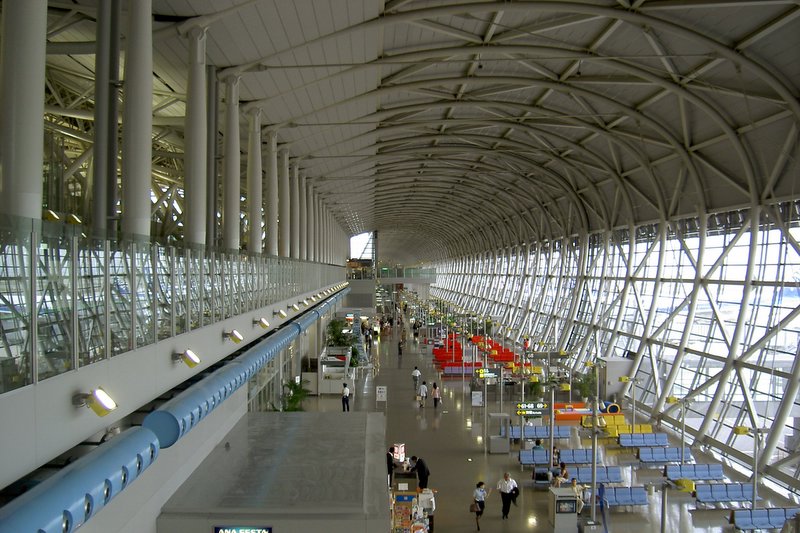




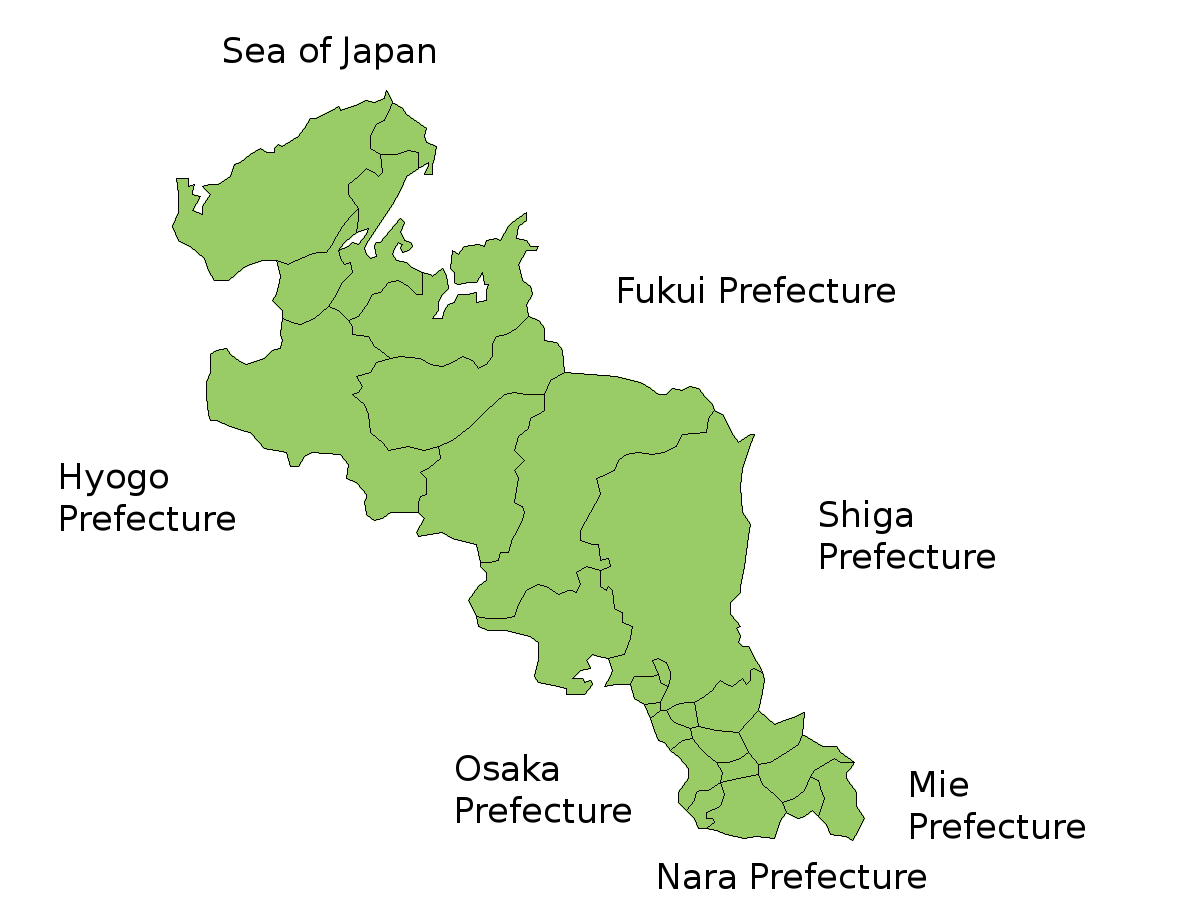
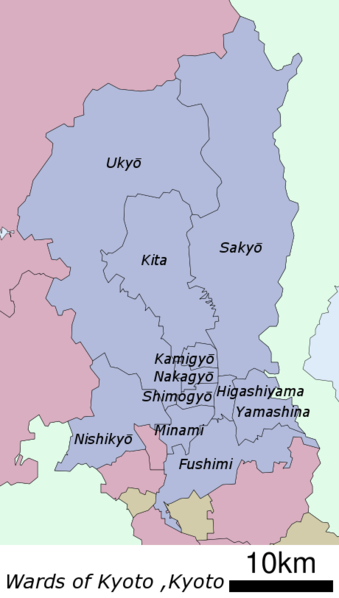



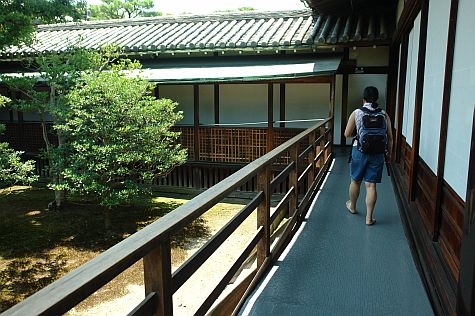

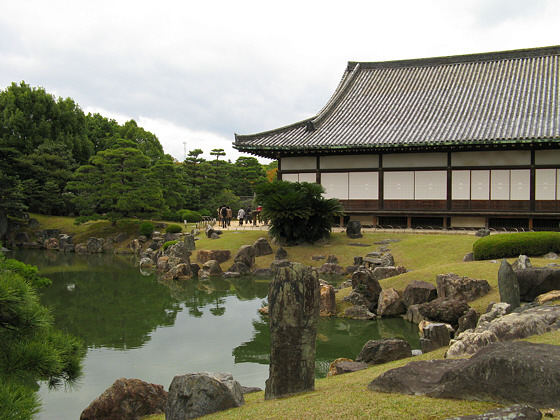
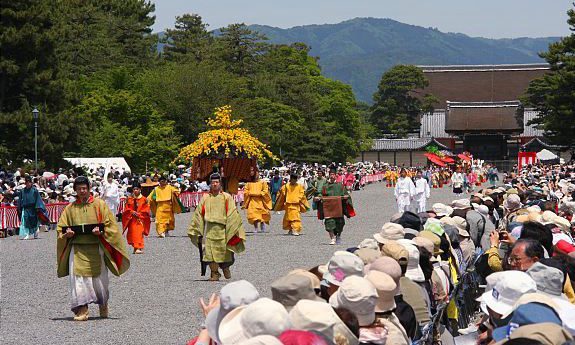
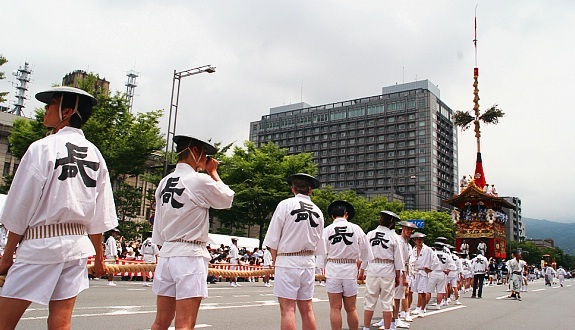
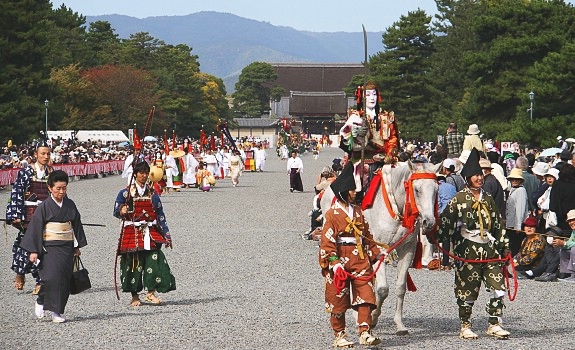
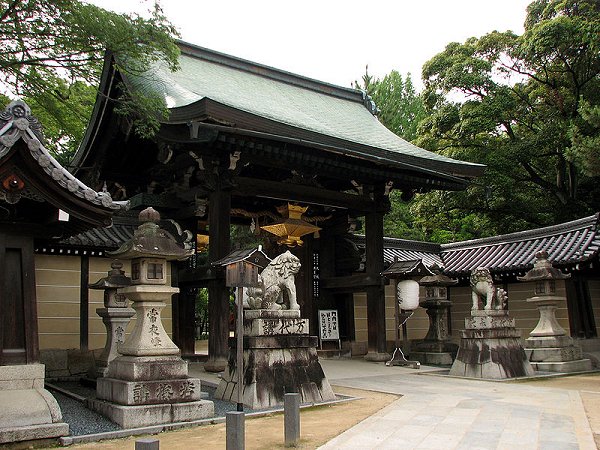
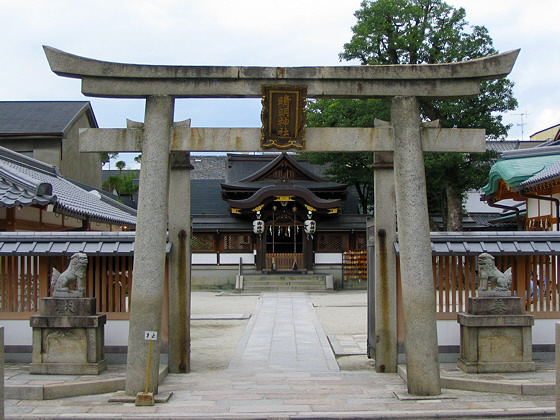

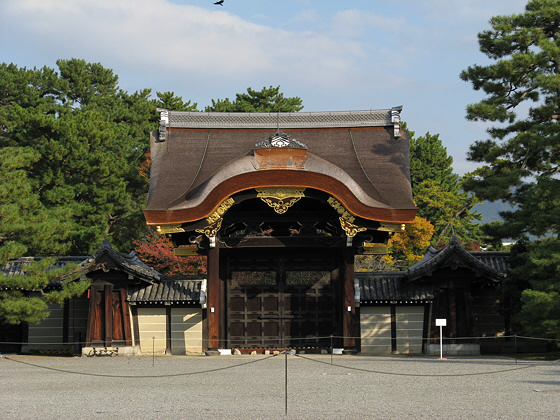
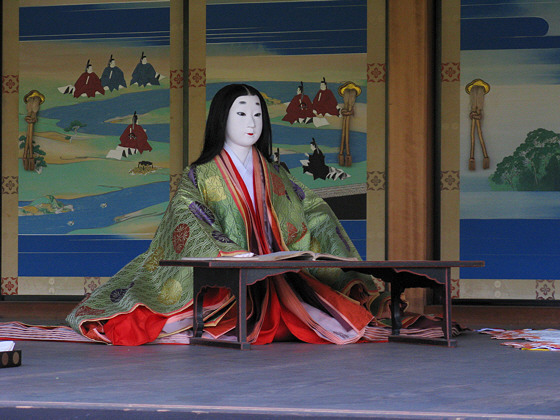
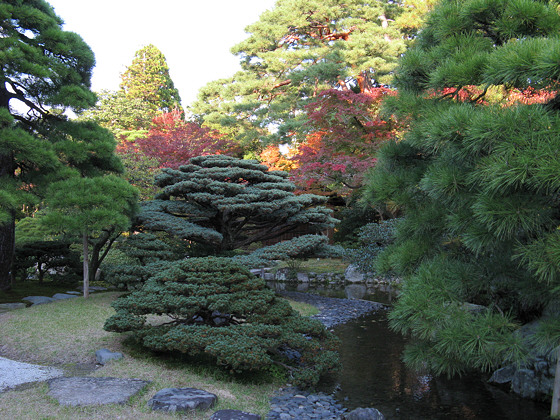













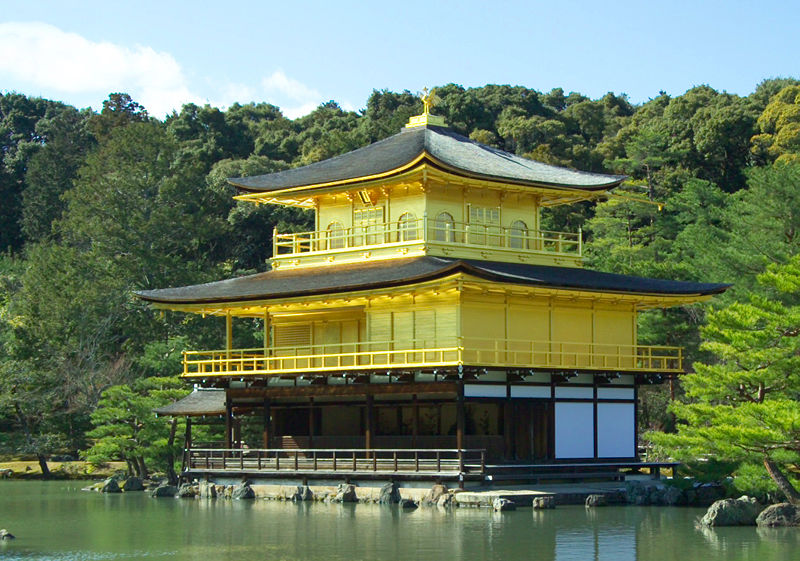




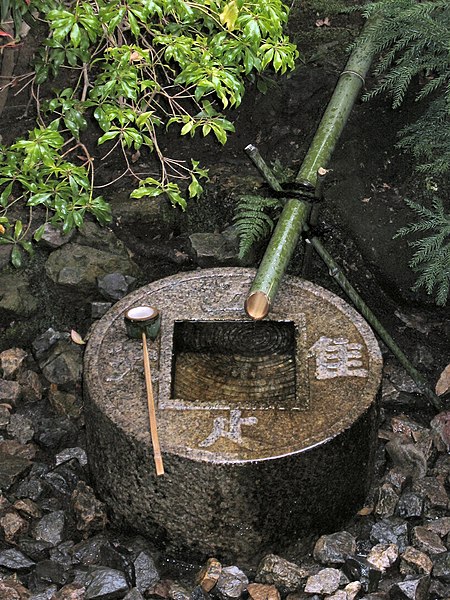


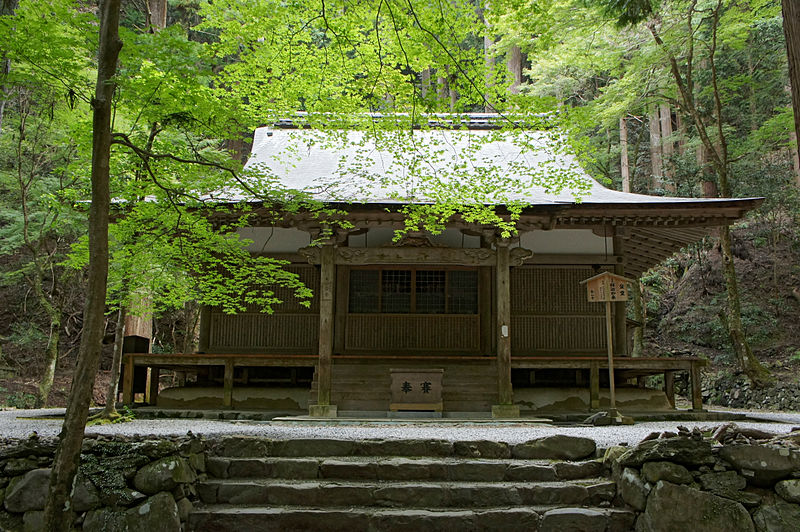


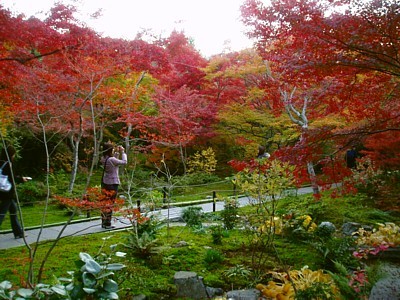








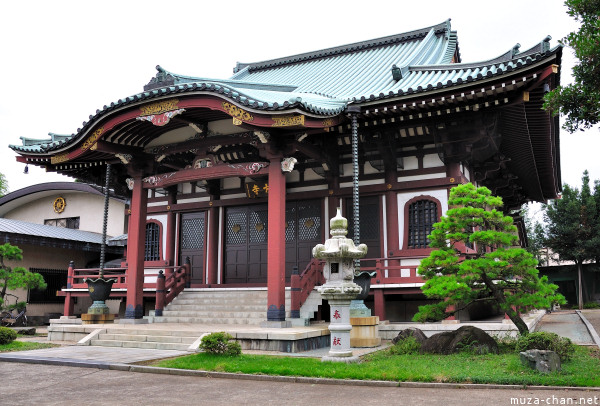




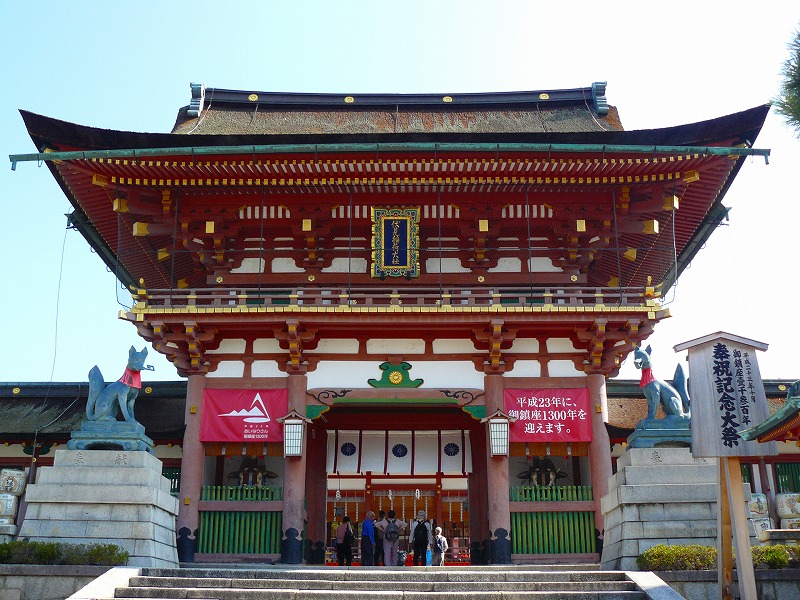







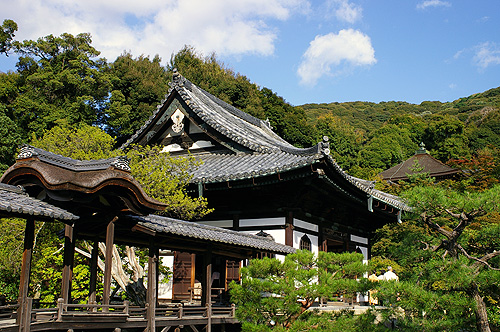



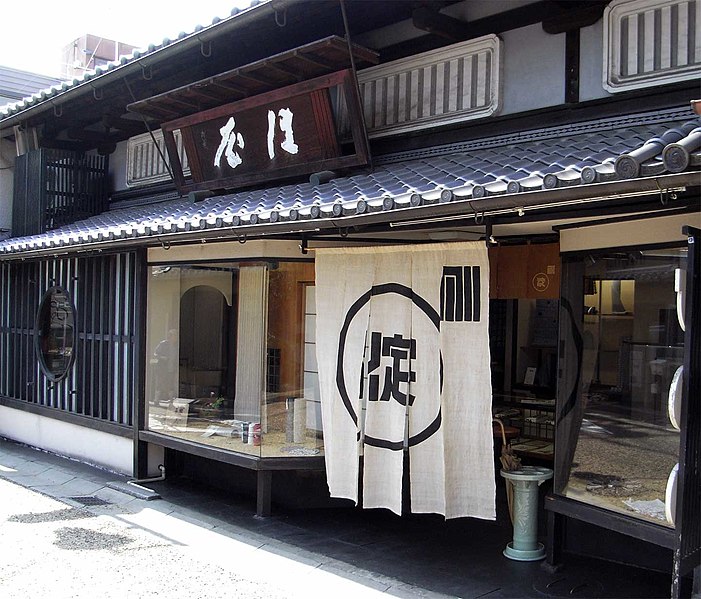





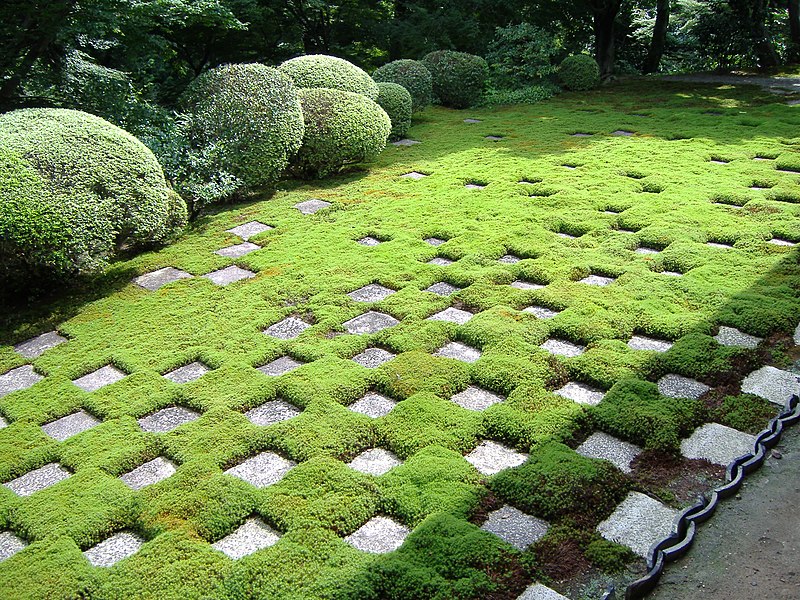


No comments:
Post a Comment